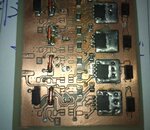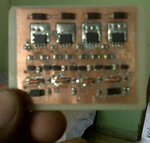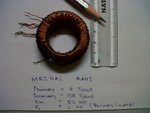mrinalmani
Advanced Member level 1
- Joined
- Oct 7, 2011
- Messages
- 463
- Helped
- 60
- Reputation
- 121
- Reaction score
- 58
- Trophy points
- 1,318
- Location
- Delhi, India
- Activity points
- 5,285
I have a few questions about mass production of inverters. (house-hold inverters, 12V/230V, 600VA to 2.5kVA)
1. What is the typical profit margin on an inverter... any rough idea?
2. Why are HF inverters not as common in the market as the bulky LF version? High price? Lower reliability? Or is it that computer chips and other power electronic components were not "so-cheap" 10 to 15 years ago?
Someone with any sort of experience in inverter/power electric company, please share your experience.
1. What is the typical profit margin on an inverter... any rough idea?
2. Why are HF inverters not as common in the market as the bulky LF version? High price? Lower reliability? Or is it that computer chips and other power electronic components were not "so-cheap" 10 to 15 years ago?
Someone with any sort of experience in inverter/power electric company, please share your experience.


